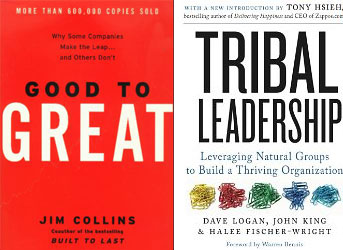Now’s the time to plan for the new normal when we’re back in business. Things are different now and will be different then. Expectations are different. And your modus operandi had better be different if you want to retain, recapture, and attract customers.
Do it now. Create—or update—your strategic plan.
Now’s the time to look around and get in touch with the new competitive landscape. So much has changed and is still changing. Especially customer expectations. Like it or not, it’s true—a privilege once granted becomes a right that’s expected.
Even if you have a strategic plan in place, there’s no doubt it will need a massive re-imagination as the competitive landscape has experienced an earthquake with numerous aftershocks (many still to come) resulting from the COVID-19 pandemic.
In a nutshell, strategic planning identifies the purpose of an organization (vision and mission), what it will do, how it will perform (goals and measurable objectives), and under what terms it will operate (values).
It specifies baseline capabilities as well as real or potential constraints that may exist or be placed on an organization, delivering a set of goals and requirements to achieve desired outcomes. A strategic plan enables an organization to establish direction and priorities while focusing on the critical actions necessary to implement and achieve the mission. A strategic plan improves resource utilization, reduces redundancy, and allows an organization to both create stability and seek opportunity.
What are your competitors offering? What are consumers expecting? For grocery stores, delivery and curbside pickup are the new normal. For wineries, free shipping is the new normal. How will you stand out from the competition and stay true to your brand?
Start with SWOT
Revisit that SWOT analysis you did or create one now. What are your Strengths, Weaknesses, Opportunities, and Threats in this new business landscape? Are there strengths in your customer base, market position, products, sales channels, or profitability? Are there weaknesses in your financial resources, staffing, or competitive vulnerability? Are there opportunities to enter new markets, form alliances, pursue M&As, and launch new products? And how are the threats surrounding the economy, lack of financial resources, loss of key staff, and more aggressive competition affecting you?
With this information at hand, you can answer these four key questions.
1) Why does this organization exist?
This can be answered in the refinement of the organizational vision, mission, and values, which define the purpose and function of the organization.
2) What should be the major work of the organization?
This is answered in the development of strategic goals, which are based on the critical issues and needs facing the organization.
3) How will the work of the organization be completed?
Here’s where we drill down to department-level objectives. Your strategies and tactics will be developed with specific details of implementation written in an action-planning format with SMART goals (specific, measurable, achievable, results-focused, and timebound).
4) What are your staffing, budget, and financing needs?
With all the departmental needs defined and quantified, we round them up to a centralized plan with an organizational structure and budget. If your financing is not at the required level, there are two solutions: either decrease the plan to a level you can afford or raise the capital required to achieve the full plan.
Together Yet Apart
You may be thinking, “But we can’t all get together to do this, and I can’t imagine a daylong ‘meeting’ online.” Well, true. Capiche is working with a model that uses the Zoom platform in shorter sessions—I’ll outline below.
Using breakout ‘rooms’ and collaboration tools, this format has the potential for even better outcomes than a daylong marathon session.
For example, at the first session, you can complete the SWOT analysis and set the stage for what’s to come. Each of the following sessions could focus on answering one of the four questions outlined above.
These shorter sessions are easier for your team to schedule since they can participate from their own home. You’ll find that you can keep things moving, interesting, and completely interactive with skillful use of the many online communication tools available. I’ve found a comprehensive review of these items in a recent blog post by Lucid, and I selectively use these tools to enhance processes and outcomes. They include:
- collaborative document editors
- simple sticky-note applications
- dedicated group brainstorming and decision-support software
- virtual design spaces and visual management tools
These tools make the process easy and FUN! Actually, it’s way better than spending a day or two cooped up together in a room slogging through the typical process.
For each of the Zoom planning sessions, I like to use this format—and it works both in-person and online:
- Discuss topic context and background.
- Engaging in individual brainstorming during which each person writes their ideas on separate notes.
- Share ideas with the whole group—posting to the group space.
- Group or cluster underlying concepts.
- Enable voting on priorities.
- Create a working draft.
- Determine next steps.
Get Started Today
Capiche is currently working with organizations remotely with great success, and we can do the same for you. Let’s get started on your organization’s new strategies for success as we all find our way toward the future. Call 541.601.0114, email, or use our contact form today.
Now’s the time to plan for the new normal. Share on X




 The realization that happy workers drive business success is sweeping the world, and the research keeps growing. Researchers at
The realization that happy workers drive business success is sweeping the world, and the research keeps growing. Researchers at 
 Last week, I was invited to take part in a local client’s holiday festivities (and I mean festivities)! I am so grateful that I could say yes because it gave me a better understanding of why this company is successful.
Last week, I was invited to take part in a local client’s holiday festivities (and I mean festivities)! I am so grateful that I could say yes because it gave me a better understanding of why this company is successful.


